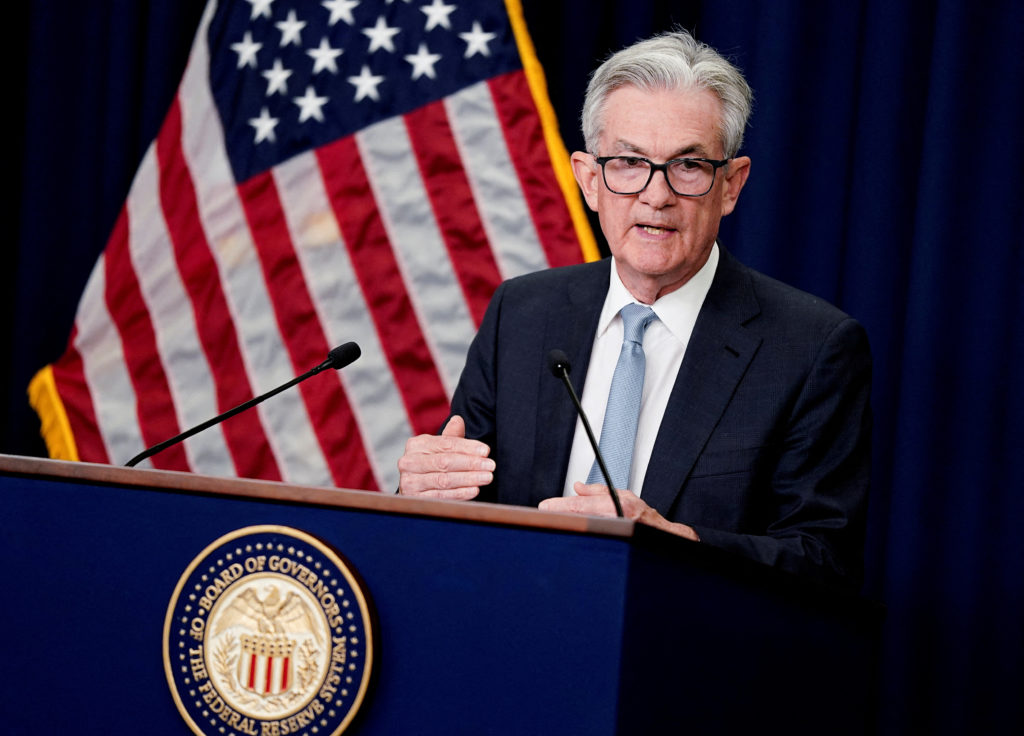Trending Stocks Ticker by Stock Target Advisor
Federal Reserve
The United States Federal Reserve has been in the spotlight as it grapples with the task of managing inflation while ensuring economic stability. In a recent statement, Fed policymakers indicated their intention to keep interest rates high for an extended period to bring inflation back to their 2% target. However, beneath this facade of unity, there exists an ongoing debate among policymakers regarding the necessity of another rate hike this year.
Understanding the Fed’s Dilemma
The Federal Reserve is the central bank of the United States, entrusted with the dual mandate of ensuring price stability and promoting maximum sustainable employment. Inflation, the persistent increase in the general price level, has been a significant concern in recent months. The Fed’s target inflation rate is 2%, which is seen as a healthy level that promotes economic stability.
Over the past year, however, inflation has surged beyond this target, largely driven by factors such as supply chain disruptions, increased demand as the economy rebounds from the COVID-19 pandemic, and rising energy and commodity prices. To curb this inflationary pressure, the Fed has implemented a series of interest rate hikes, signaling its intention to maintain a restrictive monetary policy.
Policymakers’ Unified Front
In the most recent statement, Fed officials displayed a united front, emphasizing the need for a “restrictive” monetary policy for “some time.” This cohesion is meant to convey a sense of stability and control to financial markets and the broader economy. It aims to assure businesses, investors, and consumers that the Fed is committed to taming inflation and will take necessary measures to achieve its target.
The rationale behind the unanimous stance lies in the Fed’s desire to anchor inflation expectations. By conveying a resolute commitment to keeping rates high, the central bank hopes to persuade the public that they will do whatever it takes to bring inflation back to the 2% target. Inflation expectations can become a self-fulfilling prophecy; if people anticipate higher future inflation, they may demand higher wages and prices, further fueling inflation.
The Ongoing Debate
Despite the outward appearance of unity, there is a simmering debate among Fed policymakers about the necessity and timing of another rate hike this year. This debate is a reflection of the complex economic environment in which the central bank operates.
Some members of the Federal Open Market Committee (FOMC), which sets monetary policy, argue that the current series of rate hikes will be sufficient to tame inflation over the long term. They emphasize the importance of not stifling economic growth prematurely, especially as the recovery from the pandemic is still underway.
On the other hand, there are those who advocate for more aggressive rate hikes, contending that inflationary pressures are not transitory and that the Fed should act decisively to prevent runaway inflation. They argue that raising rates more rapidly now will lead to a quicker return to the 2% inflation target and prevent the need for even more drastic measures later on.
Finding the Right Balance
The Fed faces the challenging task of finding the right balance between controlling inflation and supporting economic growth. The decision to keep interest rates high for an extended period reflects their commitment to tackling inflation. However, the internal debate highlights the complexity of the current economic landscape and the uncertainty surrounding inflation dynamics.
In the coming months, the Fed’s actions will be closely monitored by financial markets, economists, and the public. The central bank’s ability to navigate this delicate balancing act will have a significant impact on the trajectory of the U.S. economy. Ultimately, the goal is to achieve both price stability and maximum sustainable employment, and the path forward will require careful consideration and adjustment as circumstances evolve.




























